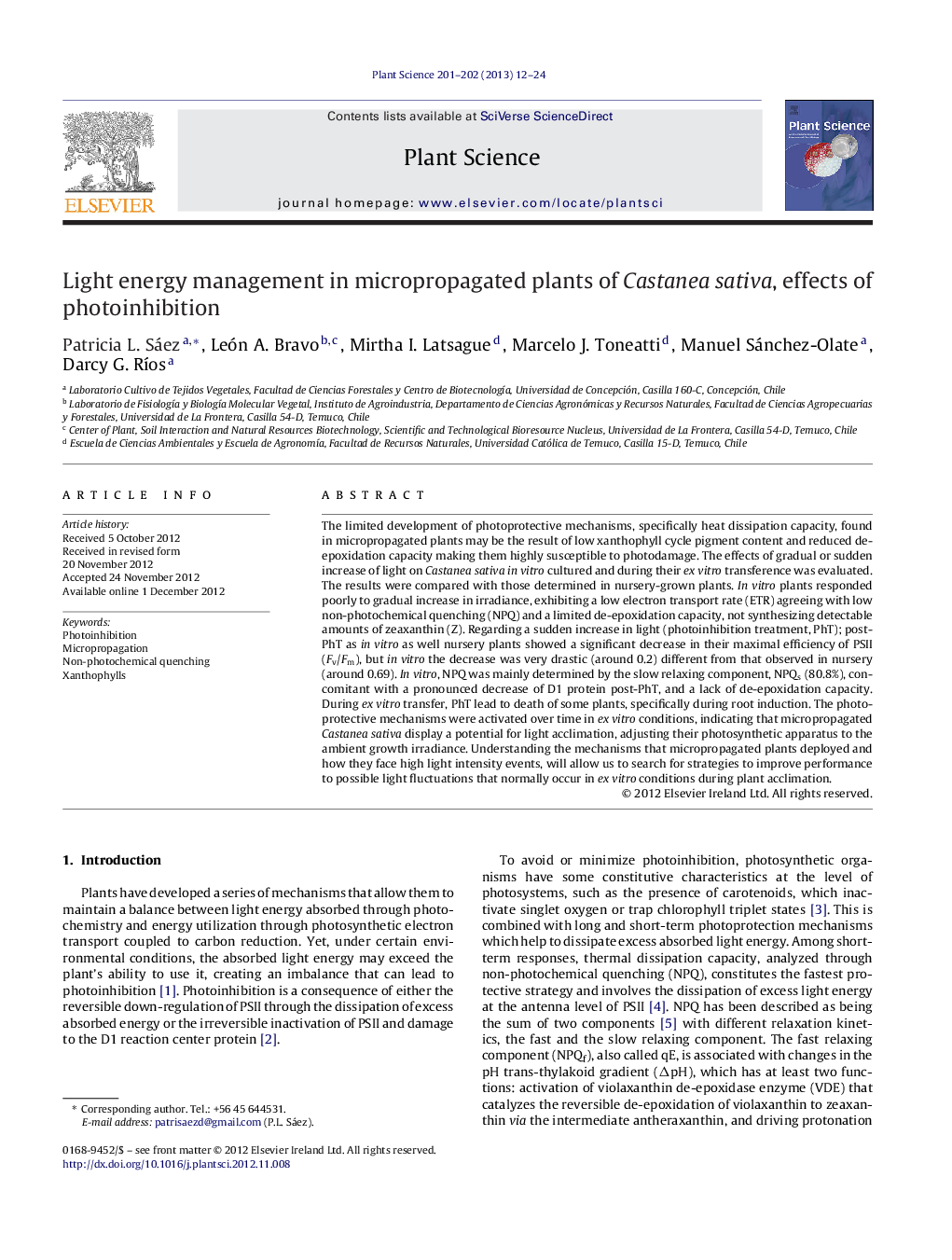| کد مقاله | کد نشریه | سال انتشار | مقاله انگلیسی | نسخه تمام متن |
|---|---|---|---|---|
| 2017218 | 1542081 | 2013 | 13 صفحه PDF | دانلود رایگان |

The limited development of photoprotective mechanisms, specifically heat dissipation capacity, found in micropropagated plants may be the result of low xanthophyll cycle pigment content and reduced de-epoxidation capacity making them highly susceptible to photodamage. The effects of gradual or sudden increase of light on Castanea sativa in vitro cultured and during their ex vitro transference was evaluated. The results were compared with those determined in nursery-grown plants. In vitro plants responded poorly to gradual increase in irradiance, exhibiting a low electron transport rate (ETR) agreeing with low non-photochemical quenching (NPQ) and a limited de-epoxidation capacity, not synthesizing detectable amounts of zeaxanthin (Z). Regarding a sudden increase in light (photoinhibition treatment, PhT); post-PhT as in vitro as well nursery plants showed a significant decrease in their maximal efficiency of PSII (Fv/Fm), but in vitro the decrease was very drastic (around 0.2) different from that observed in nursery (around 0.69). In vitro, NPQ was mainly determined by the slow relaxing component, NPQs (80.8%), concomitant with a pronounced decrease of D1 protein post-PhT, and a lack of de-epoxidation capacity. During ex vitro transfer, PhT lead to death of some plants, specifically during root induction. The photoprotective mechanisms were activated over time in ex vitro conditions, indicating that micropropagated Castanea sativa display a potential for light acclimation, adjusting their photosynthetic apparatus to the ambient growth irradiance. Understanding the mechanisms that micropropagated plants deployed and how they face high light intensity events, will allow us to search for strategies to improve performance to possible light fluctuations that normally occur in ex vitro conditions during plant acclimation.
► The light management of C. sativa microplants and nursery-grown plants was analyzed.
► Microplants exhibiting low ETR and NPQ and a limited de-epoxidation capacity (DEPS).
► In microplants PhT produced drastic decreased of Fv/Fm and a decrease of D1 protein.
► Nursery plants decreased only slightly Fv/Fm and showed a high DEPS.
► The photoprotective mechanisms were activated in microplants during ex vitro transfer.
Journal: Plant Science - Volumes 201–202, March 2013, Pages 12–24